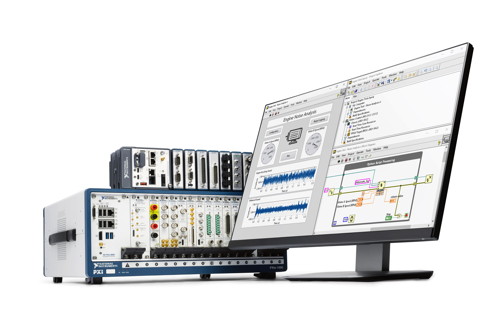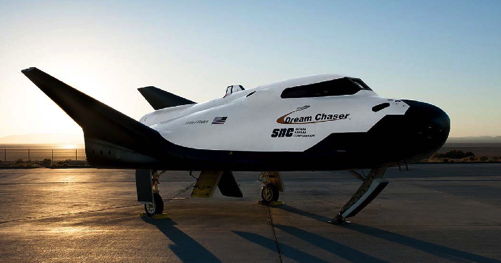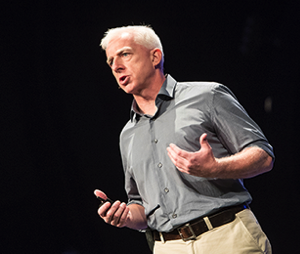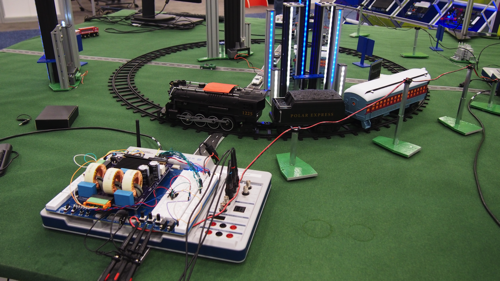NI Week, the annual confab in Austin held by National Instruments, is a mix of new product unveiling, customer testimonial, LabVIEW developer conference and engineering geek out, blended with NI’s high energy enthusiasm and Austin’s “weird” charm.
Last week, the 2018 edition of NI Week drew more than 3,300 attendees and unveiled four new software tools and LabVIEW 2018, an upgrade to the original LabVIEW platform for users who have not yet adopted the new platform, LabVIEW NXG.

LabVIEW 2018 adds functionality and integrates more third-party IP, such as Python script calls. The update strengthens code reliability by automating software building and execution, adding integration with open interface tools like Jenkins. LabVIEW 2018 includes new deep learning functions and improved floating-point operations, reducing time to implementation for test engineers using FPGAs for high-performance processing.
New Software Tools
In addition to LabView 2018, NI announced the following new software tools:
FlexLogger is configuration-based, data-logging software for validation test. With no programming, engineers can use FlexLogger to simplify test configurations and extract key insights, with sensor-specific workflows to acquire and log synchronized, mixed measurements.
InstrumentStudio™ evolves the concept of a single instrument, “soft” front panel into a unified, multi-instrument environment, capturing screenshots and measurement results from a suite of instruments in a single view. InstrumentStudio saves project configurations for units being tested, making these configurations available to share with colleagues or repurpose for other tests. The software was designed to be more intuitive when debugging during testing.
ELVIS III — NI’s Educational Laboratory Virtual Instrumentation Suite (ELVIS) — is a platform developed for university engineering education, combining instrumentation, embedded FPGA design and web access to measurements and curriculum. ELVIS III creates an active, collaborative learning environment for electrical and mechanical engineering programs. Its utility is extended with application boards designed by educators and industrial partners.
SystemLink is application software for managing distributed systems. It improves operational efficiency and decreases maintenance costs by using a centralized interface for automating tasks, such as deploying software updates, remotely configuring devices and monitoring system performance and health.
The Value of an Open Platform
NI Week reflects NI’s value proposition built on the concept of an open system: LabVIEW, the hardware and systems using it and more than 300,000 active users. This ecosystem is improving the technical capabilities and productivity of numerous industries, each unique and important to a complex society.

This all began in 1976 with James Truchard (Dr. T), Jeff Kodosky and Bill Nowlin, who started NI by creating a GPIB interface for the PDP-11 minicomputer. Expanding the interface to the fledgling IBM and Macintosh personal computers led to the development of the GUI-based LabVIEW in 1986. Through the ensuing decades of hardware and software extensions — particularly the adoption of PXI — NI’s strategy has evolved to provide an open, software-defined environment to equip “engineers and scientists with systems that accelerate productivity, innovation and discovery,” quoting NI’s mission statement.
Scott Rust, NI’s senior VP responsible for the company’s R&D, argues that scalable, open systems are evermore important in a world of increasing complexity, where the rate of technological innovation has exceeded humanity’s ability to adapt, paraphrasing Astro Teller, “Captain of Moonshots” at X.
Providing an open platform enables users to customize and develop innovative solutions to address the increasing complexity of the times we live in. NI Week is all about showcasing how that is being done and is known for inspirational presentations demonstrating how the LabVIEW platform is being used to solve challenging problems and develop remarkable products.
Notable Presentations
Several of the presentations that inspired me described Joby’s autonomous airborne taxi, Sierra Nevada’s Dream Chaser spacecraft, ON Semiconductor’s ICs that bring sound to those who can’t hear and presentations on autonomous driving by Kamal Khouri, VP for advanced driver assistance systems at NXP, and Bryant Walker Smith, an assistant law professor at the University of South Carolina.

And I was impressed by an ambitious goal set by Texas A&M University: 25,000 engineering students in their program by 2025. Miroslav Begovic, department head, discussed A&M’s commitment to help fill the need for more engineers to support the world’s increasing reliance on technology.
Invester Conference
During the week, NI briefs investors on the company’s goals, strategy and financial performance. Alex Davern, president and CEO since January 2017, outlined NI’s key financial objectives as
- Outperforming the competition by growing revenue 4 percent to 7 percent annually.
- Improving non-GAAP operating margins to 18 percent.
These are complemented by programs to develop employees and strengthen key customer relationships. In 2017, NI’s revenue grew 5 percent, and non-GAAP operating margin was 15.6 percent.

NI’s strategy to achieve its revenue growth target is to focus around a new “core strategic vision,” deliver on platform priorities — software, data acquisition products and modular instruments — and reorient the direct sales channel to focus on two customer segments: 100 companies classified as tier 1 and some 5,000 companies identified as tier 2. To fuel platform development, NI committed to investing 18 percent of revenue in R&D, up from the previous model of 16 percent.
Exhibition
A core element of NI Week, the exhibition provides a forum where NI teams demonstrate the capabilities and uses of LabVIEW, and many companies in NI’s ecosystem of partners and suppliers promote their complementary products. This year’s exhibition comprised some 104 demos and 106 companies.

Several of the companies exhibiting will be familiar to Microwave Journal readers: HUBER+SUHNER, Insulated Wire, MegaPhase, Optimal Plus, RADX, Rosenberger, Teledyne Microwave Solutions and X-Microwave.
Seize the Opportunity
Beyond learning about new features and tricks using LabVIEW, NI Week provides an opportunity to step back and see the big picture. In the kickoff keynote to NI Week, Eric Starkloff, executive VP responsible for sales and marketing, stressed the adaptability and value of open systems, affirming NI’s value proposition.
But he also widened the aperture, challenging the engineering community not to “get stuck” by what’s right in front of us, by a lack of imagination about the future. Reminding us to recall what inspired each of us to pursue a career in engineering, he asked us to remember that vision and admonished us not to settle for developing new emojis rather than curing cancer or getting civilization to Mars.
It’s worth watching Eric’s inspiring words — just a few minutes, beginning at 5:09. I’m betting it will inspire you and may change your perspective about your priorities.
As Eric asks, what inspired you to become an engineer? Leave your story in the comments section, below.
